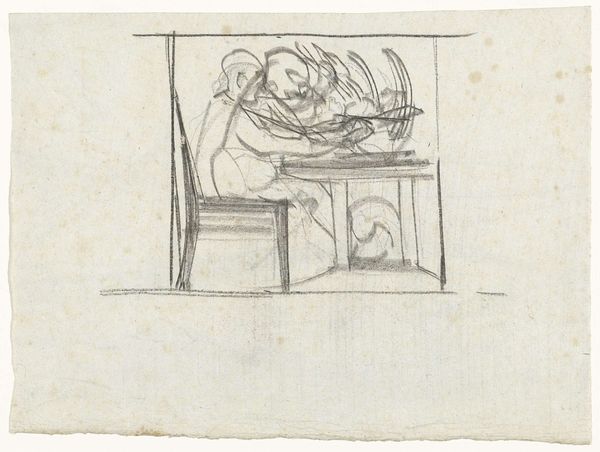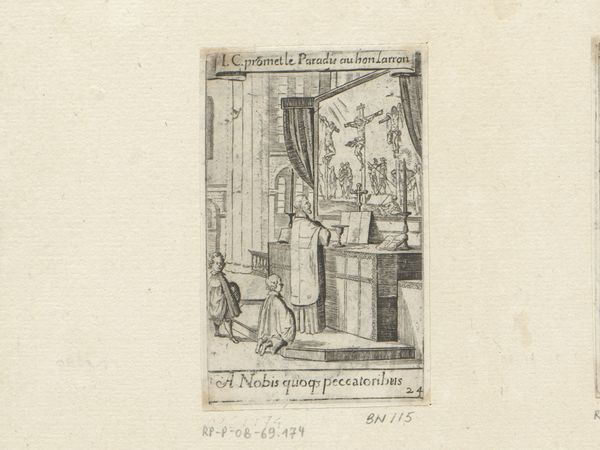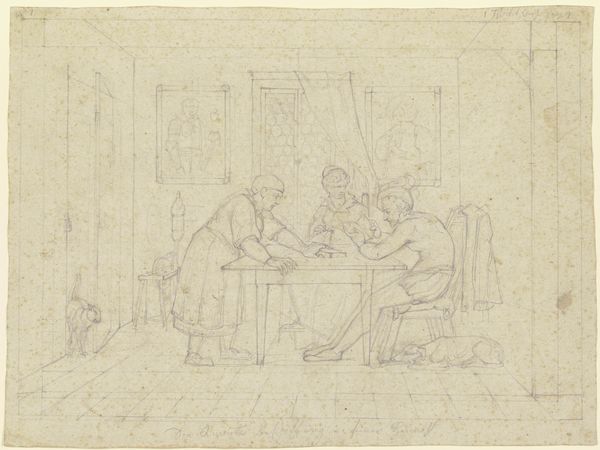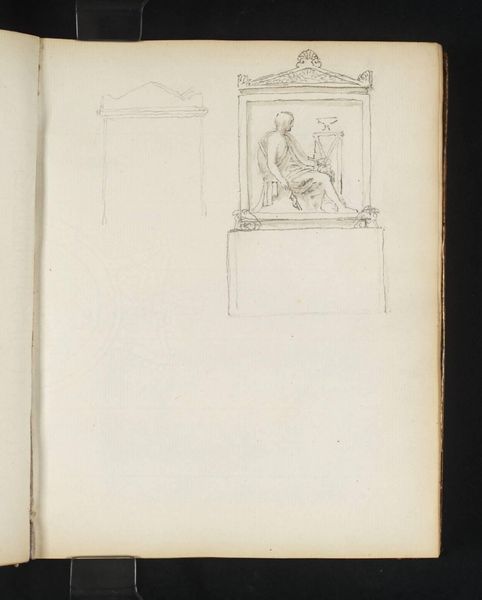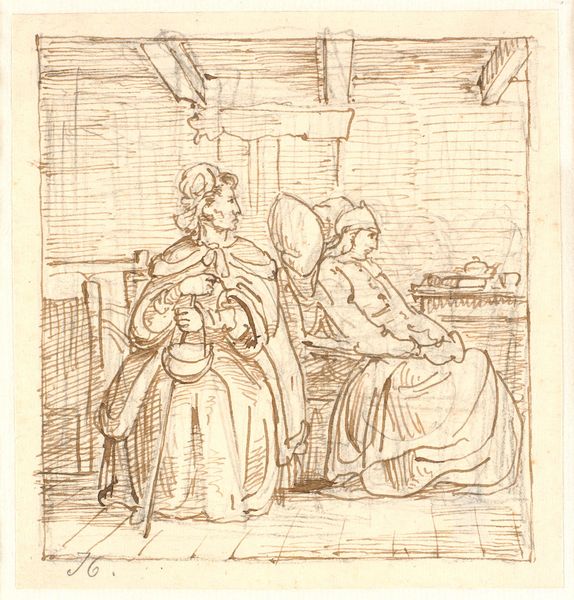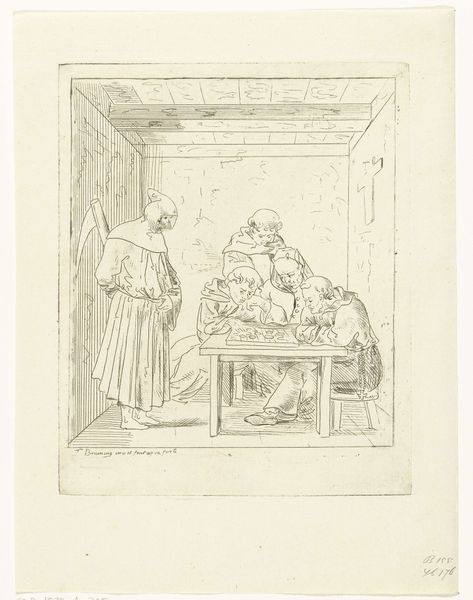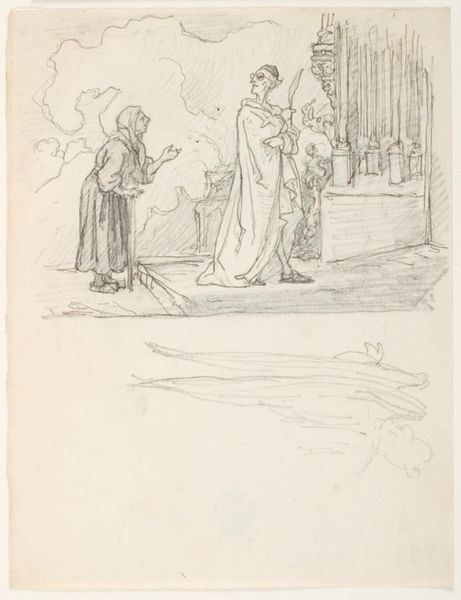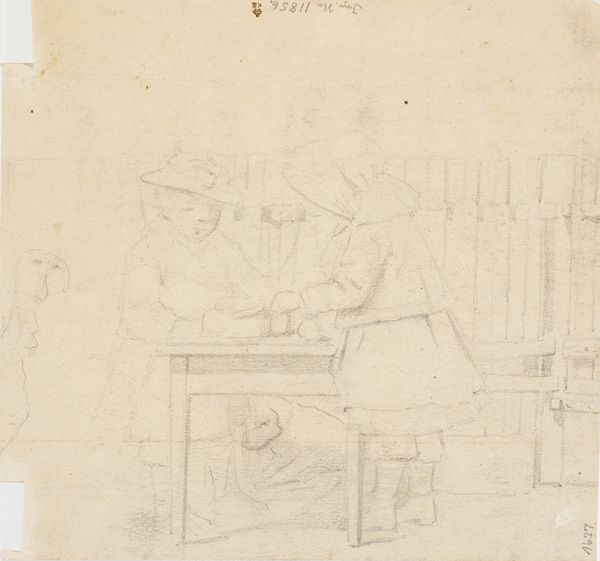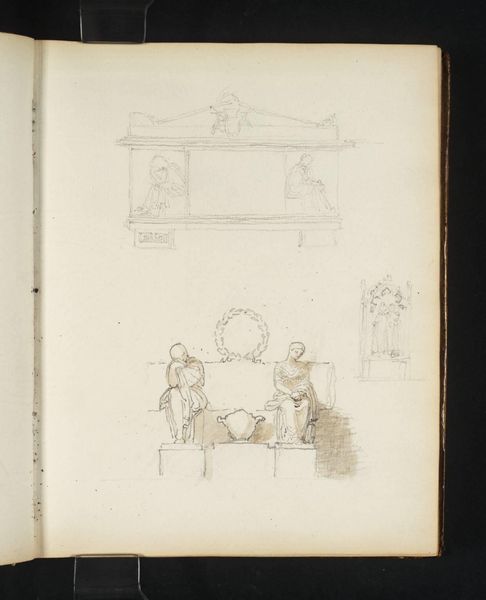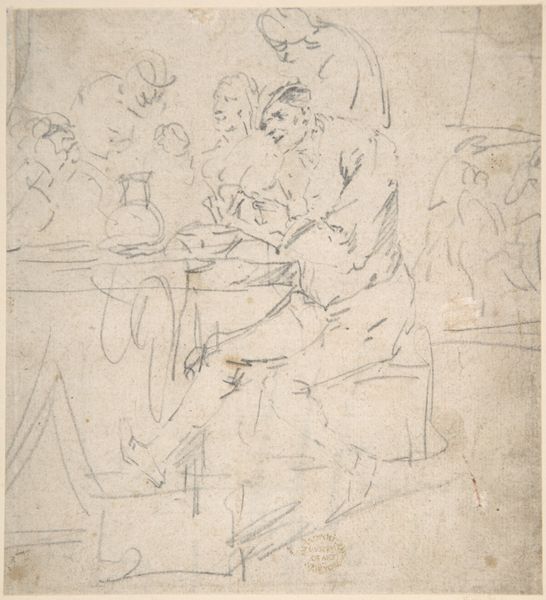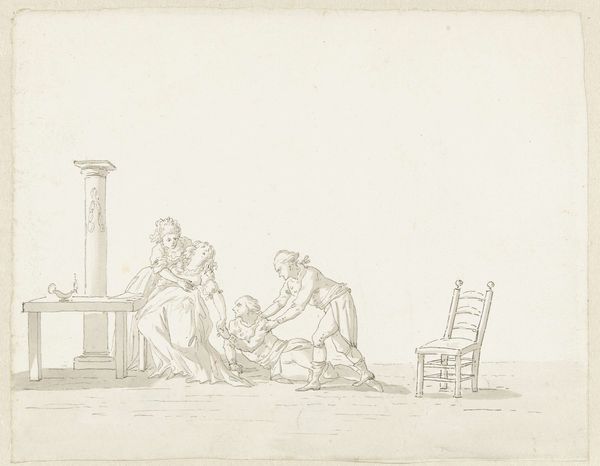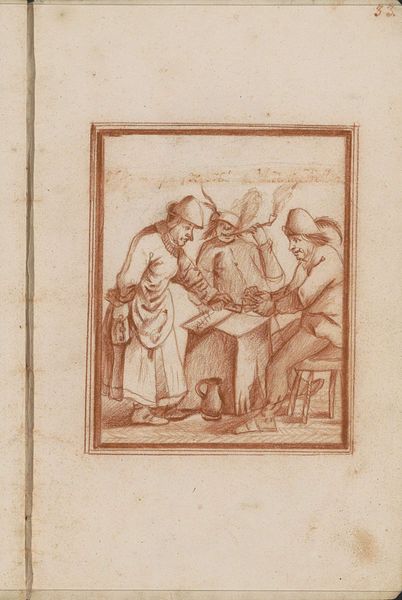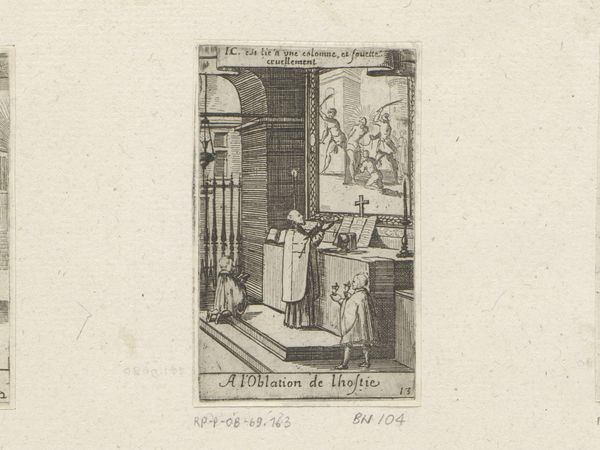
drawing, paper, pen
#
portrait
#
drawing
#
neoclacissism
#
figuration
#
paper
#
pen
#
genre-painting
Copyright: Public Domain: Artvee
Curator: Benjamin West’s pen and ink drawing on paper, "Woman and Girl at a Writing Desk," presents us with an intimate scene, a glimpse into domestic life. Editor: The immediacy of the sketch is striking; it feels so intimate and candid. The fluid lines and the economy of detail imbue the scene with a remarkable warmth and sense of quiet focus. Curator: Absolutely. It’s fascinating how West invokes Neoclassical themes in this genre scene. Notice the figures’ simple garments and idealized forms, even the architectural elements subtly reference classical antiquity. This harkens back to an era where the artist himself championed art's role in fostering civic virtue. Editor: Yes, I see the references, but for me, the power of this drawing rests more on its symbolic gestures. The desk laden with objects – the lamp, the books, the writing implements – it speaks to me of knowledge, of learning, but also perhaps the transmission of cultural values from one generation to the next. Curator: And who holds access to these virtues of knowledge becomes crucial in our interpretation. Consider how education for women evolved during West’s time, shaped by specific societal expectations. Was writing presented to women and girls, during that time, as purely domestic or did it also afford some participation in public life? Editor: It's a crucial question! The simple act of writing can be viewed through the lens of female empowerment and societal expectations, a balancing act many women had to navigate. Even the light cast by the lamp might symbolize enlightenment. The woman's slight inclination towards the younger girl as they're writing creates a very intimate portrait. It hints at secrets whispered in shared candlelight and underscores a potent symbol of family. Curator: Exactly. West’s engagement with historical painting placed him at the nexus of institutional power and art. This drawing offers a more nuanced perspective, though, reflecting his engagement with shifts in gender roles of the era and its implications for how knowledge was consumed, circulated, and embodied by women. Editor: Looking at this again, it leaves me pondering how we assign and recognize certain actions, like learning and knowledge, with powerful, emotional implications that still reverberate today. Curator: It also prompts us to ask further questions: What role do these figures occupy? What meanings and cultural scripts did their practices embody during the eighteenth century? Editor: Ultimately, the sketch encapsulates both its time and universal concepts, prompting us to reflect on legacies and cultural inheritance.
Comments
No comments
Be the first to comment and join the conversation on the ultimate creative platform.
